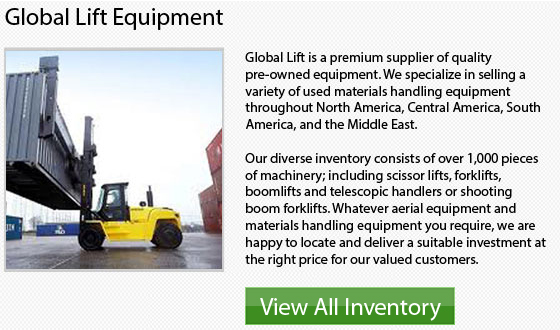
Ever since their launch in the material handling business during the 1920s, lift trucks have undergone a huge change. These days, these high tech machines are a lot smarter and stronger. These kinds of equipment have changed the material handling world and have become exceptional workhorses in our warehouse and distribution facilities all around the globe.
Initially, during their introduction roughly 100 years ago, lift trucks were very simple pieces of motorized machinery designed to move pallet loads from one place to another. Nowadays, really advanced units flood the marketplace. These units are available in a huge array of weight capacities, numerous lifting heights and different designs. Furthermore, these types of machines come with different ergonomic designs to improve operator comfort and lots of new safety features. Keeping the operator as comfortable as possible can greatly increase the overall productivity attained during a shift.
A key feature placed on nearly all of the available lift trucks on the market are tires and forks. Tires allow the machine to move around and the forks can carry and lift loads. The basic application and design of different types of lift trucks used in distribution facilities, warehousing applications and manufacturing centers is included in this specific article.
Counterbalanced Lift Trucks
Counterbalanced Lift Trucks comprise: Electric lift truck models as well as Internal Combustion or IC models.
Narrow-Aisle Forklifts
Narrow Aisle Lift Trucks include: Turret Trucks, Reach Trucks and Order-Pickers.
Low Lift Pallet Trucks or Pallet Jacks
Pallets Jacks consist of Electric-Powered Pallet Trucks and Non-Powered Pallet Trucks.
Counterbalanced Forklift Trucks
The forklift is the most common type of lift truck. This unit is the counterbalanced, sit-down version. A weight situated in the machine's rear is responsible for counterbalancing the load's weight. The counterbalance is what prevents the forklift the truck from tipping over.
Usually, a counterbalanced forklift has a lifting height of approximately 16 feet, 189 inches is the most popular. What's more, these units are capable of lifting a range between 4,000 to 6,500 pounds. Counterbalanced lift trucks are available with backup alarms and other safety features like for instance lights.
The forklift market is currently divided into around 60% electric units, with 40 percent IC units. Every type of lift truck has a specific place and is ideal to accomplish lots of different tasks. Depending on whether or not you will be using the machinery outdoors or inside and what kind of surfaces and terrain you would be operating on, as well as what particular kinds of loads you would be using determines the kind of lift truck which you will select.